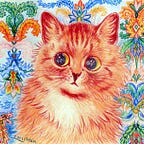The Manananggal & Vampires of South East Asia
When it comes to monsters, we play favourites. For one reason or another, certain creatures of the night are on trend while others wither away, their potency forgotten. Contemporary pop culture favors an Unholy Trinity: Vampires, Werewolves and Zombies. These three archetypes represent the celebrities of the horror genre, alongside the phantasmal and, more recently, the extra-terrestrial.
While it would be wrong of me not to include such icons of evil in my bestiary, I’d like to provide a more bespoke account of these monsters rather than retread bog standard representations. Take for example, the vampire.
The image of the vampire has evolved considerably over the centuries, from bloated Balkan undead to the sexy aristocracy of modern literature and cinema. But one thing has remained: our conception of these bloodsucking creatures has been primarily informed by European sources.
But vampirism is not confined to one folkloric tradition. On the contrary - spirits of the sanguine are well represented in almost all world mythologies. After all, the idea of a creature that preys on our blood, our very life essence, provides a remarkably rich ground for legend. We find perhaps the most horrifying manifestation of the vampire in the region of South East Asia, where the night is haunted by a grotesque vision, a creature that attacks the houses of pregnant women in a foul bloodlust.
It goes by many names and regional variations, but the basic form retains similarities: the flying, disembodied head of a woman, kept aloft by wings or simply by floating, with trailing organs attached. In each case, this monster has but one desire — to taste human blood.
In the Visayas of the Philippines, she is the Manananggal. In Malay ghost tales, she appears as the Penanggal or Penanggalan. There is the Thai Krasue, the Cambodian Ahp and Laotian Kasu. The folklore of Bali has the Leyak.
Given the diverse range of such a creature, her incarnation and origin vary culturally. Sometimes she is a witch. The Malaysian Penanggalan is a result of black magic, a sorcery performed by a woman as she meditates in a bath of vinegar. Once she is ready to take flight, her head detaches and flies off for the hunt, returning to her lower body by daybreak. In other cases, such as in the Krasue, such vampirism is a result of a curse from a sinful past life. In the Philippines, the Manananggal is just one of many Aswang, a rich collection of evil shape-shifting spirits. In Bali, the vampire even has a monarch — Rangda, the demon queen.
Let us envision the habits of a Manananggal, whose name derives from the Tagalog word tanggal, ‘to remove / to separate’. She typically appears as a frightful woman, capable of severing her torso at will and spreading leathery, bat-like wings. Her upper half sets off into the night, her entrails swaying below her like a set of tentacles. The Manananggal tends to favor sleeping, pregnant women for her prey, using her proboscis like tongue to pierce the flesh and exsanguinate the victim. In some cases, the vampire will suck out the heart of the fetus.
How does one defend against such a cursed being? One option is to kill the creature outright by tracking down the inert lower torso and smearing it with salt, crushed garlic or ashes. This renders the Manananggal unable to rejoin her body, dooming the monster to death by sunrise. In Malaysia, houses are guarded against the Penanggalan by the use of thorny leaves from the mengkuang plant, scattered about or tied on the vine across windows. The leaves will impale the dangling organs of the vampire, trapping or injuring her and rendering the hunt unsuccessful.
These monstrous vampires have haunted the nights of their respective lands since time immemorial. In the case of the Philippines, Franciscan missionaries such as Juan de Plasencia recounted descriptions of the Manananggal in the 1500s, and described the creature thus:
his purpose was to show himself at night to many persons, without his head or entrails. In such wise the devil walked about and carried, or pretended to carry, his head to different places; and, in the morning, returned it to his body — remaining, as before, alive.
In typical fashion, he explains away the creature as a delusion generated by the devil. Older accounts of the being by Filipino authors likely existed in writing, but are now lost — due in part to Spanish colonialists deliberately destroying works of indigenous literature.
The potency of such creatures in the imagination has never subsided. If anything, South East Asian vampiric folklore is more popular than ever, with a variety of representations in film, television and comics, plus widespread sightings making the rounds on social media. Naturally, their most vivid depictions have been in works of supernatural horror such as in the Indonesian film Mystics in Bali (released as Leák) directed by H. Tjut Djalil. Pivotal scenes include the depiction of a Leyak attack on a pregnant victim. Stephenie Meyer, eat your heart out (literally).
Sources
Dr. Emily Zarka, Manananggal: The Flying, Disembodied, Blood Sucking Nightmare | Monstrum
Fr. Juan de Plasencia, ‘Customs of the Tagalogs’ (1589)
Wikipedia:
